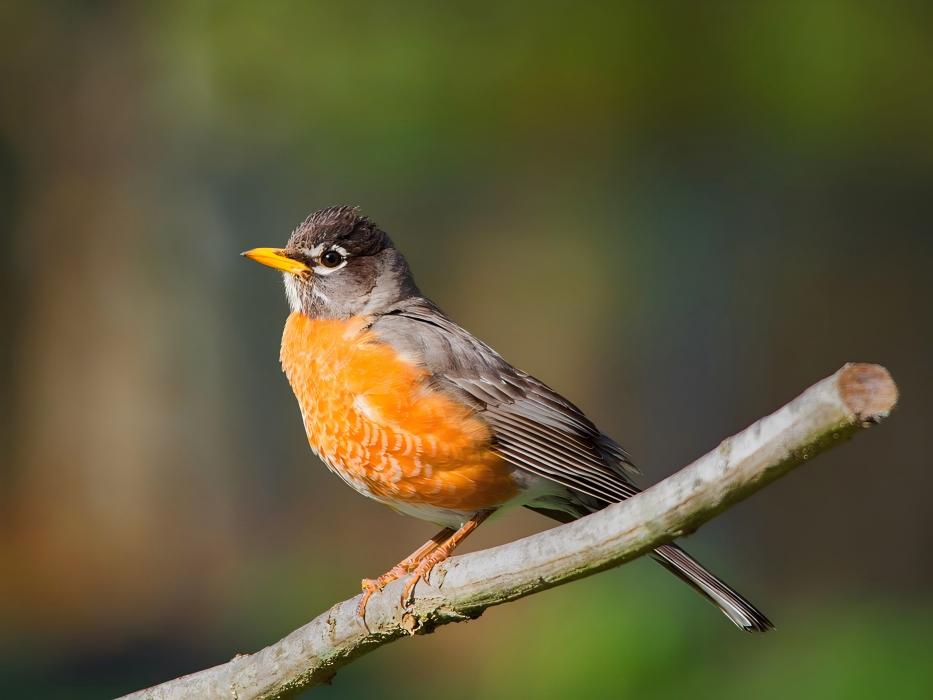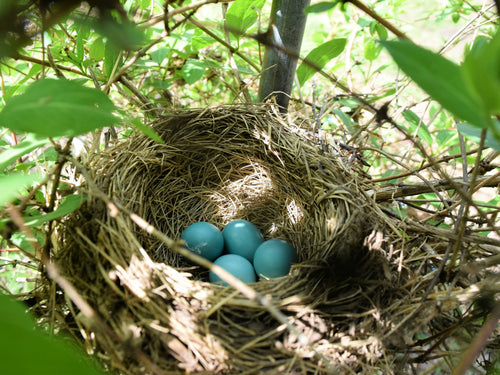Do American Robins Migrate?
TTNatureTeam
American robins are incredibly common across North and Central America. You can find them anywhere from rural parts of Idaho to large city centers like New York City. In spring and summer, these orange-bellied birds hop all over our yards looking for their next meal. By winter, we see very few. Have you ever wondered where they go?
As common as they are, did you know they are migratory - sorta? But where exactly do these vibrant and cheery birds go? And how often do they travel?
Keep reading to learn about American robins and their migration patterns.
Do American Robins Migrate?
American robins are somewhat migratory birds. While they don't all travel thousands of miles like geese, they do fly searching for food and will travel far during winter when plants die.
Because of this, American robins that live in the northern part of the U.S. and in Canada travel southward.
Why Do Some American Robins Stay in the Same Area?
Not all American robins travel far during winter to search for food. Instead, many American robins stay within their 'home' areas, as they adapt to the cold.
While American robins are migratory, they are built for the cold. They have features like feathers that remain dry even with snow and rain. To do this, robins preen their outer contour feathers, keeping them oiled and waterproof.
Apart from this, American robins survive in cold winters by flocking together in large groups. You can find them in groups of hundreds or thousands, which helps them avoid predators and seek food.

How Far Do American Robins Migrate?
Now that we know American robins migrate, we should ask how far. The distance depends on the bird and the region's food availability. Either way, robins are strong birds that, in good conditions, can fly 100 to 200 miles a day.
The distance in which they fly varies a lot. Some American robins, the ones that live on the cold Vancouver Island, fly as far south as Guatemala. However, others don't migrate at all. For instance, a few American robins have been spotted nesting and permanently living in Central Florida.
Do Robins Come Back to the Same Place Every Year?
American robins aren't picky. They make anywhere their home as long as there is adequate food, water, and shelter.
Although they typically return to the same areas during winter, they can also fly hundreds of miles away searching for berries or insects. Both become harder to find as cold weather sneaks through.
American robins are creatures of habit. They don't just remain in the same area during winter, but also when mating. When it comes to mating, these vibrant birds return to the same nesting site. This is amazing for birders with nests, as they know the birds will return.
What Do American Robins Eat in the Winter?
American robins are like any other bird species; they are food-motivated. Because of this, it's important to understand their diets, which change a lot from spring to winter.
During spring, American robins eat a protein-rich diet typically made up of invertebrates like caterpillars and worms. They may also eat bugs like beetles, flies, and snails.
As you can imagine, finding protein when snow covers the ground is difficult. To survive, American robins switch their diets to a more plant-based one, searching for berries and seeds.
What an American robin will eat, though, depends on the region since they are spread so far and wide. American robins in the Northeast United States, for instance, consume things like wild cherries, dogwood, sumac, and black gum. In contrast, American robins in the Southeast eat chinaberries and blackberries.

How To Attract American Robins to Your Yard?
American robins are a joy to have in your yard year-round. Although they are more commonly seen in spring as they search the ground for worms and caterpillars, you can still attract them to your home with a few small changes.
Robins just want to survive. To help them, you'll need to provide them with some sort of shelter, food source, and water.
Shelter
For shelter, you'll want to make sure there are bushy plants and trees in your yard that still have foliage during winter. While you can build and display a traditional birdhouse, robins aren't known for using them.
Instead, they want bushy areas to hide in from predators, as American robins are noticeable against dead grass and white snow.
Food
Apart from shelter, another way to attract American robins to your yard, year-round, is by providing them with food. During winter, flocks of robins search for berries and vegetation.
To give them fruits and plants they can eat, plant varieties and species that flower and fruit during winter. A few of these include holly, snowberry, and dogwood. These plants, though, will vary depending on your location.
So, what about bird feeders? Avid bird watchers and lovers know that having a bird feeder with seeds in your yard is a gift. It's a great way to attract all types of birds, but what about robins?
American robins seldom visit bird feeders, but it doesn't hurt to include one in your yard. While they don't really eat seeds, they do eat fruits, suet, and mealworms. You can add these to your feeder in hopes of attracting robins when their food sources are scarce in winter. Even if they don't visit your bird feeder, other species will.
Water
Depending on where you live, providing robins with water is tricky. For those of us who live in icy and snowy winter areas, water will freeze, which means that, for the most part, birdbaths are out of the question.
Instead, you can include heated birdbaths and water sources. They keep the birds warm while also melting the ice and snow.
Conclusion
Overall, American robins are somewhat migratory birds. Although they are more active and noticeable during the warmer months of the year, they flock together to stay warm and protected in winter. If their food source is scarce, they migrate to new areas, searching for winter fruiting trees and invertebrates. Many American robins, though, remain in the same areas as food is abundant.




